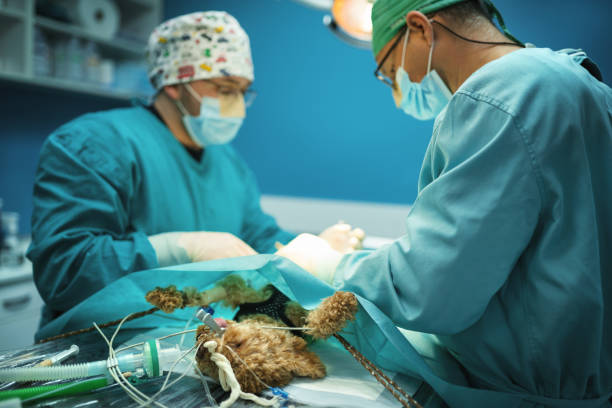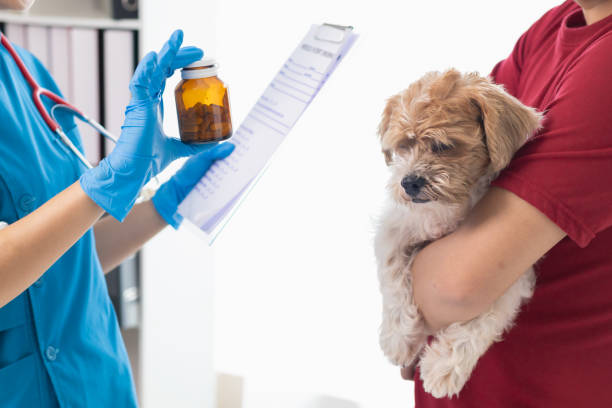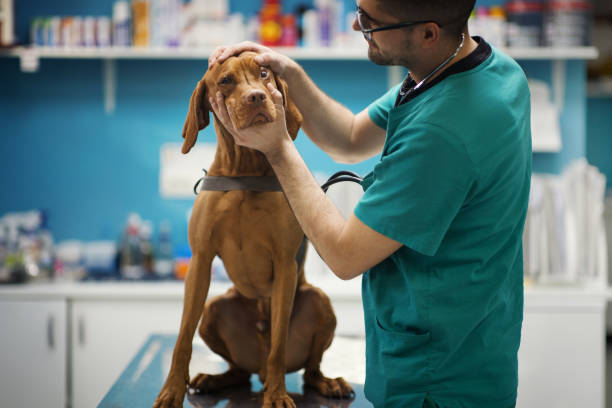
Liver shunts in dogs occur when veins that usually carry blood to the liver bypass the organ via an abnormal vessel. They can be tricky to deal with and cause some serious health issues if left untreated. Some of our canine companions are born with them, and others develop them later in life.
The symptoms of liver shunts can vary widely, and early diagnosis and treatment are essential for improving the quality of life and lifespan of affected dogs.
I'm a practicing vet with over 13 years of experience in small animal surgery and medicine and have been a dog owner my entire life. In this feature, I'll explain what a liver shunt is and how to treat it.
What is a liver shunt in dogs?
A liver shunt in dogs, also known as a portosystemic shunt (PSS), is a condition where blood bypasses the liver. Usually, blood from the digestive tract will flow through the liver before returning to the heart. In dogs with a liver shunt, some of this blood bypasses the liver, preventing it from filtering toxins and nutrients. This can cause toxins and waste to build up in the body, which can lead to serious health issues. There are two types of liver shunts found in dogs:
- Congenital Shunts: These are present from birth. They are typically caused by a malformation of the blood vessel (or vessels) that connect the portal system which drains the digestive tract to the systemic system which goes to the rest of the body.
- Acquired Shunts: These develop over time and often occur due to liver disease or other underlying conditions. Often it is conditions that raise the blood pressure in the veins that connect the digestive tract to the liver which brings about an acquired liver shunt.
Liver shunts in dogs are not particularly common. Most seen in our furry friends are congenital. It is rarer to see acquired shunts from liver disease or other systemic problems.
Unfortunately, liver shunts can significantly affect a dog’s life expectancy. Factors such as the underlying cause, how severe the shunt is, and the effectiveness of treatment all influence how long a dog with a liver shunt will live.

Symptoms of liver shunt in dogs
Dogs with liver shunts usually display a combination of certain clinical signs, these include:
- Dog losing weight
- Reduced appetite
- Sudden appetite for eating unusual things
- Poor growth (seen with congenital shunts)
- Increase in thirst
- Increased urination
- Vomiting - sometimes with blood present
- Diarrhea - sometimes blood in dog stool
- Struggling to urinate and/or passing blood in urine
- Lethargy in dogs
- Behavioral changes - staring into space, circling, head pressing
- Seizures
If you notice any of these signs at home, however subtle, it is very important to take your dog to your vet to have them checked out.

Treatment for liver shunt in dogs
The good news is that liver shunts can be treated. The best treatment depends on several different factors including your dog’s age, their overall health status, how severe their symptoms are, and what type of shunt is present.
Surgery is the preferred treatment for the majority of dogs with congenital shunts. The surgery can vary greatly depending on how many abnormal blood vessels there are outside of the liver. Some are relatively straightforward with one vessel outside and some can be very complicated with multiple shunts. The aim of the surgery is to block the abnormal vessels and push the blood flow back through the liver. This can be achieved using various techniques, such as:
- Ameroid constrictors: This is a stainless steel ring with a casein center that gradually swells, causing a narrowing of the blood vessel. This slowly closes the shunt and allows the body to adjust over a period of time.
- Cellophane bands: These work in a similar way to the ameroid constrictors. They cause the blood vessels to close slowly over an extended period of time.
- Suture: A piece of suture material can be placed around the shunt.
- Hydraulic occluder: This is a silicone cuff that is placed around the vessel. It causes compression when inflated. The cuff can also be deflated to reverse the occlusion.
In some cases, surgery may not be a safe or suitable option, but medical management can help to improve a dog’s quality of life. Lots of cases require medical management alongside surgery.
Management options include:

How can owners help at home?
The best way to help dogs with a liver shunt is to keep in close contact with your vet and attend all appointments and check ups. Always give the correct medication using the correct dosage. Always keep a close eye on your doggo to check for signs the condition is worsening such as vomiting, lethargy or seizures. Try to keep your dog in a quiet and calm environment to reduce stress for them. Reduce exposure to loud noises or sudden changes in routine wherever possible.
- Antibiotics: These can help to reduce gut bacteria, which can decrease the amount of ammonia produced. This is beneficial as ammonia is a toxic substance that can build up in the blood and cause something called hepatic encephalopathy. This is a dangerous neurological condition associated with liver shunts. Antibiotics can also be prescribed to treat any underlying infections.
- Lactulose: This is an indigestible sugar that can help to lower the pH of the gut therefore making it less of a friendly environment for bacteria that produce ammonia. Lactulose can also promote stool passage which can help to eliminate toxins.
- Dietary changes: Feeding our doggos a low-protein diet can reduce the amount of ammonia produced by the body. It has been suggested in recent research that soy protein may be a healthier option than meat-based protein. Feeding smaller meals more frequently can also be beneficial.
- Enemas: In some cases, enemas can be used to flush out feces and bacteria from the colon.
Causes of liver shunt in dogs
Causes of liver shunts are either congenital or acquired.
Congenital shunts are present from birth and are caused by a developmental abnormality. Sadly there is no definitive way to prevent congenital liver shunts, these are due to genetic defects.
Acquired shunts are less common. They develop later in our furry friend's life and are down to conditions that affect the liver such as injuries, increased blood pressure, hepatitis, and cirrhosis of the liver. The good news is there are ways to reduce the risk of acquired shunts in some cases:
- Feeding a healthy diet: A balanced and nutritious diet will help to keep your furry friend in top condition and it can even help support liver health therefore reducing the risk of liver disease.
- Regular health check-ups: Keeping up to date with your doggos health check ups will mean your vet can keep a close eye on them to ensure they have a clean bill of health. Regular visits mean your vet will be able to detect early signs of liver disease and address potential underlying causes. Keeping up to date with annual vaccinations, worming and flea treatment is important too.
- Prevent exposure to toxins: Wherever possible, avoid exposing your furry friend to toxins in their environment.
Although all owners should do everything to keep their furry friends as healthy as possible, there is no guarantee that their dog will not go on to develop a shunt despite their best efforts. If any worrying clinical signs such as weight loss, diarrhea, vomiting, lethargy or jaundice are noted, speak to your vet straight away. An early diagnosis and prompt treatment can often improve the prognosis for canine companions with liver shunts.
You might also want to read about dilated cardiomyopathy in dogs.







